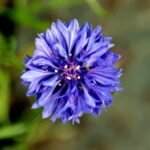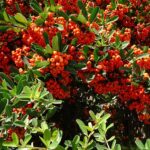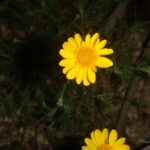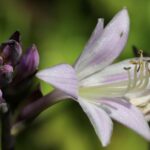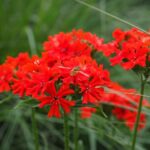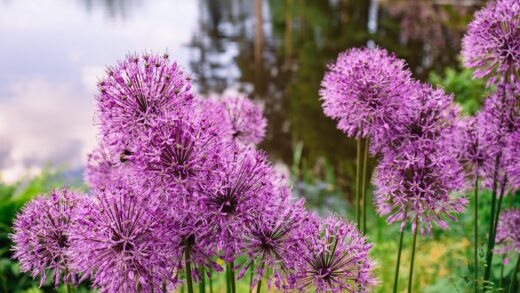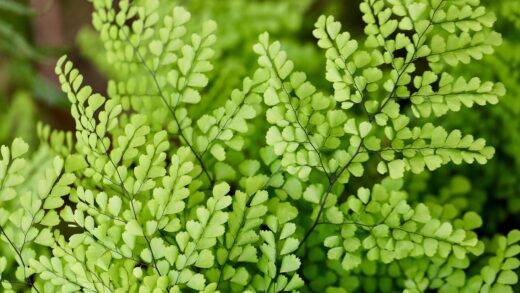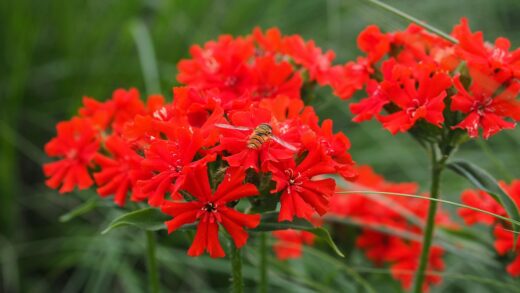Wintering of japanese barberry
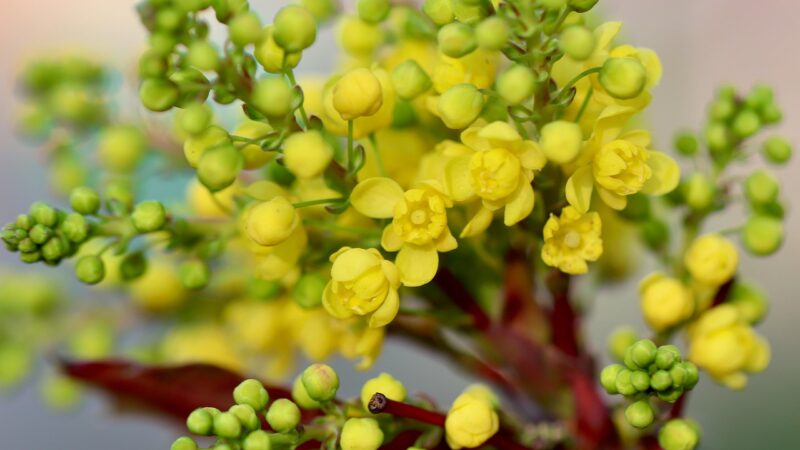
The winter hardiness of Japanese barberry is one of its most celebrated attributes, allowing it to withstand cold temperatures and challenging winter conditions in a wide range of climates. This inherent resilience means that for established, healthy plants, extensive winter preparation is often unnecessary. However, understanding the factors that contribute to its winter survival and knowing when to provide additional protection are key to ensuring the shrub not only survives the dormant season but emerges in spring ready for vigorous growth. The focus of winter care is primarily on mitigating potential damage from environmental stressors such as extreme temperature fluctuations, heavy snow, and winter sun, particularly for younger or more vulnerable plants.
The plant’s natural dormancy process is its primary defense against the cold. As daylight hours shorten and temperatures drop in the autumn, the shrub undergoes physiological changes, shedding its leaves and ceasing active growth to conserve energy. This allows it to tolerate freezing temperatures that would be lethal during its growing season. A healthy plant that has had its needs met throughout the spring and summer—with adequate sun, water, and nutrients—will enter this dormant period in a strong state, making it well-equipped to handle the rigors of winter without human intervention.
Despite its overall toughness, certain conditions can pose a threat. Young plants, in their first or second year in the ground, have less-developed root systems and are more susceptible to the effects of frost heave, where the soil repeatedly freezes and thaws, potentially damaging the roots. In regions with very little reliable snow cover, which acts as a natural insulator, the roots can be exposed to colder soil temperatures. Additionally, heavy, wet snow or ice can accumulate on the branches, causing them to bend or break under the weight.
Therefore, a thoughtful approach to wintering involves assessing the specific risks posed by the local climate and the maturity of the plant. For most gardeners, winter care will be minimal, focusing on good cultural practices throughout the year to ensure the plant is healthy going into the fall. For those in harsher climates or with newly planted shrubs, a few simple preparatory steps can provide valuable insurance against potential winter injury, safeguarding the long-term health and structural integrity of the plant.
Preparing the shrub for dormancy
The preparation for a successful winter begins long before the first frost arrives. One of the most important steps is to cease all fertilization by the middle of summer. Applying nitrogen-rich fertilizers late in the season can stimulate a flush of new, tender growth. This new growth will not have adequate time to mature and harden off before the cold weather sets in, making it extremely vulnerable to being killed by the first hard frost. This can weaken the plant and create entry points for diseases.
More articles on this topic
Watering practices should also be adjusted in the autumn. As the plant’s growth slows and it prepares for dormancy, its water requirements decrease. It is important to gradually reduce supplemental watering, allowing the plant to respond to the natural cues of the changing season. However, it is crucial that the shrub does not enter the winter in a state of drought stress. If the autumn has been particularly dry, it is wise to provide one or two deep, thorough waterings before the ground freezes solid, ensuring the soil around the root zone is adequately moist.
Good garden sanitation in the fall is another key preparatory step. Raking up and removing fallen leaves from around the base of the Japanese barberry is important for reducing the overwintering populations of fungal spores and pest eggs. This cleanup minimizes the potential for disease outbreaks the following spring. It also discourages rodents like voles and mice from nesting in the debris at the base of the plant, where they might be tempted to chew on the bark during the winter months, a practice which can girdle and kill the stems.
Finally, a late autumn inspection of the shrub is a good practice. Any dead, broken, or clearly diseased branches should be pruned out before winter. This not only improves the plant’s appearance but also removes weak points that could be further damaged by snow and ice. However, major structural pruning should be deferred until late winter or early spring, as extensive cutting in the fall can sometimes inhibit the plant’s ability to achieve full dormancy.
The role of mulch in winter protection
Mulch is a valuable tool for protecting Japanese barberry during the winter, although its primary function in the cold season is different from its role during the growing season. In winter, the main purpose of a mulch layer is not to keep the soil warm, but rather to insulate it and keep it at a more consistent temperature. It helps to prevent the damaging cycles of freezing and thawing that can occur during periods of sunny winter days followed by frigid nights. This temperature regulation protects the plant’s root system from injury and reduces the risk of frost heave.
More articles on this topic
The best time to apply winter mulch is in the late autumn, after the ground has experienced its first hard frost but before it freezes solid. Applying it too early, when the ground is still warm, can delay the plant’s dormancy and may also provide a cozy habitat for rodents seeking winter shelter. A two-to-three-inch layer of organic material such as shredded bark, wood chips, or pine needles is ideal. This layer should be spread over the entire root zone of the plant.
As with mulching during the growing season, it is crucial to keep the mulch from being piled directly against the stems of the shrub. A small gap should be left around the base of the plant to ensure good air circulation and to prevent the bark from staying overly moist, which could lead to rot or provide cover for bark-gnawing pests. The mulch should form a protective blanket over the surrounding soil, not a smothering cone against the plant’s trunk.
This practice is particularly important for newly planted or young Japanese barberry shrubs. Their root systems are less extensive and closer to the soil surface, making them more vulnerable to temperature fluctuations and frost heave. For well-established, mature plants in climates where they are fully hardy, winter mulching may not be strictly necessary if a layer already exists from the growing season. However, ensuring a consistent layer is in place provides an extra degree of protection that can contribute to the plant’s overall health and vigor.
Protecting plants from snow and ice
In regions that experience heavy snowfall, the weight of accumulated snow and ice can pose a significant physical threat to the branches of a Japanese barberry. The dense branching structure of many cultivars can catch and hold large amounts of heavy, wet snow. This weight can cause the branches to bend severely, and in some cases, to split or break, permanently damaging the shrub’s form and creating wounds that can be entry points for diseases.
One method of protection, especially for upright or columnar varieties, is to gently wrap the shrub before the first heavy snowfall. This can be done by loosely encircling the plant with twine, burlap, or a flexible mesh netting, starting at the base and working upwards in a spiral. The goal is not to wrap it tightly, but simply to draw the branches closer together, providing mutual support and creating a more unified structure that is better able to shed snow rather than catch it. This wrapping should be removed in early spring as the weather warms to allow for proper air circulation.
During the winter, after a heavy snowfall, it is a good practice to go out and gently remove the snow from the branches. This should be done carefully using a broom or a long pole, with an upward sweeping motion to lift the branches and dislodge the snow. It is important to avoid shaking the branches vigorously or trying to break off ice, especially when they are frozen solid, as this can cause them to become brittle and snap easily. A gentle approach is key to preventing further damage.
For shrubs planted near the edge of a driveway or road, damage from plowed or shoveled snow is another concern. The force and weight of snow being thrown onto the plant can easily break branches. If possible, it is best to avoid planting Japanese barberry in these high-risk locations. If a plant is already situated in such a spot, erecting a temporary physical barrier, such as a sturdy wooden A-frame or a snow fence, can help to deflect the snow and protect the shrub from mechanical damage throughout the winter months.
Managing winter damage in spring
As winter recedes and the snow melts, it is time to assess the Japanese barberry for any damage it may have sustained. A thorough inspection in early spring will reveal any branches that have been broken by snow, ice, or wind. It is also an opportunity to identify any stems that have died back due to cold injury, which will appear dry, brittle, and will not show any signs of swelling buds. All of this damaged and dead wood should be pruned out promptly.
When pruning out winter damage, it is important to make clean cuts using sharp, sterile pruning tools. Dead or broken branches should be cut back to the nearest healthy, outward-facing bud or to a main branch. Making a clean cut encourages the plant to heal quickly and reduces the risk of disease entering the wound. This spring cleanup not only improves the appearance of the shrub but also directs the plant’s energy towards producing new, healthy growth rather than sustaining damaged tissue.
In some cases, a plant may have suffered from “winter burn,” a condition where the stems and buds are damaged by a combination of cold temperatures, winter sun, and wind, which causes them to desiccate. This often appears as a browning or bleaching of the bark and buds, typically on the side of the plant most exposed to the prevailing winter winds or sun. The best course of action is to wait until the plant begins to leaf out to be certain which parts are truly dead, and then prune those affected branches back to live wood.
If a shrub has experienced significant dieback or has been severely damaged by snow load, it may require a more substantial pruning to restore its shape and vigor. In severe cases, a hard rejuvenation pruning, cutting the entire shrub back to a few inches from the ground, can be the best option. Japanese barberry responds very well to this treatment and will send up a flush of new stems from its base, effectively renewing the entire plant. This should be done in late winter or early spring before new growth begins.








